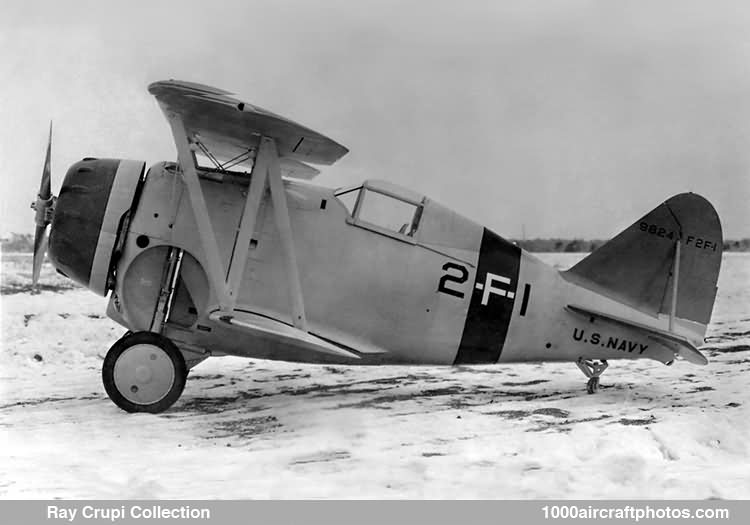First flown on October 18, 1933, the XF2F-1 (BuNo. 9342) had fabric covered wings and a metal fuselage skin. It was powered by a two-row Pratt & Whitney R-1535-44 engine with a distinctive tapered cowling, and carried an armament of two 0.30 in (7.62 mm) guns in the forward fuselage, firing through the propeller disc. Like the FF-1, the new prototype had an enclosed cockpit, the first Navy single-seater to enjoy this refinement. The prototype demonstrated a top speed of 229 mph (367 kmh) at 8,000 ft (2,438 m) and an initial rate of climb of more than 3,000 ft (914 m)/min.
A production contract for 54 F2F-1s (BuNos. 9623 to 9676) with 700 hp R-1535-72 engines was awarded in 1934 (plus one replacement in 1935, BuNo. 9997). Deliveries of the F2F-1s began early in 1935.
By mid-1935, VF-2B (the famous Fighting Two squadron) on USS Lexington and VF-3B on USS Ranger were flying the new biplane. Fighting Two, continuously on the Lexington, retained their Grumman Flying Barrels until 1940, VF-3B became VF-7B on USS Yorktown and then VF-5 on the Wasp, taking its F2Fs with it; they were replaced by F3Fs in 1939, and the older fighters passed into use as gunnery trainers attached to naval air stations and patrol wings."
